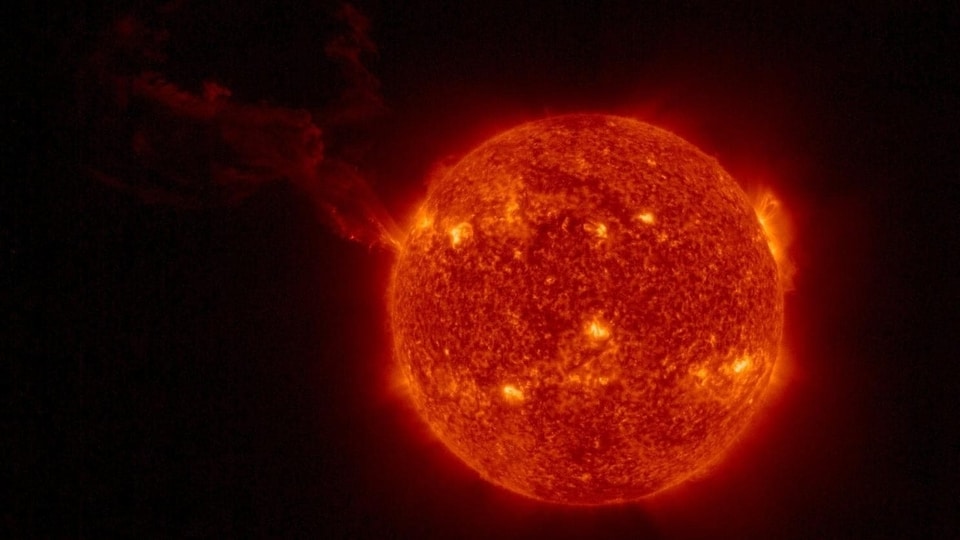Solar flare explosion sparks BLACKOUTS on Earth, NASA satellite shows; Will a solar storm strike too?
Sunspot AR3331 has exploded and has resulted in a M2.5-class solar flare eruption, NASA’s Solar Dynamic Observatory revealed. The radiation sparked a radio blackout in Mexico and USA. Will a solar storm follow as well? Find out.

Yesterday, it was reported that multiple highly active regions on the Sun were spotted on the farside of the Earth that are threatening our planet with some powerful solar storms. But even before that, one of the Earth-facing sunspots, AR3331, went unstable yesterday, June 9, and produced an M2.5-class solar flare. The incident was spotted by the NASA Solar Dynamics Observatory (SDO). The eruption sparked a short-wave radio blackout in Mexico and the southern region of the USA, marking the second such event this week. Earlier this week, a similar flare eruption caused blackouts over Africa. Astronomers are now trying to find out whether a solar storm will follow the eruption.
According to a report by SpaceWeather.com, “Sunspot AR3331 exploded on June 9th (1711 UT), producing an M2.5-class solar flare. A pulse of radiation ionized the top of Earth's atmosphere. This, in turn, caused a minor blackout of shortwave radio transmissions over the Gulf of Mexico”. It was also reported that loss of signal at frequencies below 15 MHz was observed for as much as 30 minutes after the flare.
Second blackout in a week
After a period of three weeks without much solar activity, the Sun is gearing up for an intense period. This week may not have seen any solar storms, but solar flare eruptions and resultant blackouts were persistent. Three days ago, a solar storm sparked a blackout over the African continent that disrupted wireless communications for as long as 90 minutes. And yesterday, the Gulf of Mexico came under fire as it lost shortwave frequencies for half an hour.
The ionizing effect that causes blackouts can disrupt radio communication, GPS services, and drone activities as well as delay flights and can leave ships in the ocean without any reception.
But this is not even the end of the problems. Researchers must look for any signs of coronal mass ejection (CME) releases after the flare because it can spark a solar storm in the next two days.
How NASA Solar Dynamics Observatory monitors solar activity
The NASA Solar Dynamics Observatory (SDO) carries a full suite of instruments to observe the Sun and has been doing so since 2010. It uses three very crucial instruments to collect data from various solar activities. They include Helioseismic and Magnetic Imager (HMI) which takes high-resolution measurements of the longitudinal and vector magnetic field over the entire visible solar disk, Extreme Ultraviolet Variability Experiment (EVE) which measures the Sun's extreme ultraviolet irradiance and Atmospheric Imaging Assembly (AIA) which provides continuous full-disk observations of the solar chromosphere and corona in seven extreme ultraviolet (EUV) channels.
Catch all the Latest Tech News, Mobile News, Laptop News, Gaming news, Wearables News , How To News, also keep up with us on Whatsapp channel,Twitter, Facebook, Google News, and Instagram. For our latest videos, subscribe to our YouTube channel.
































